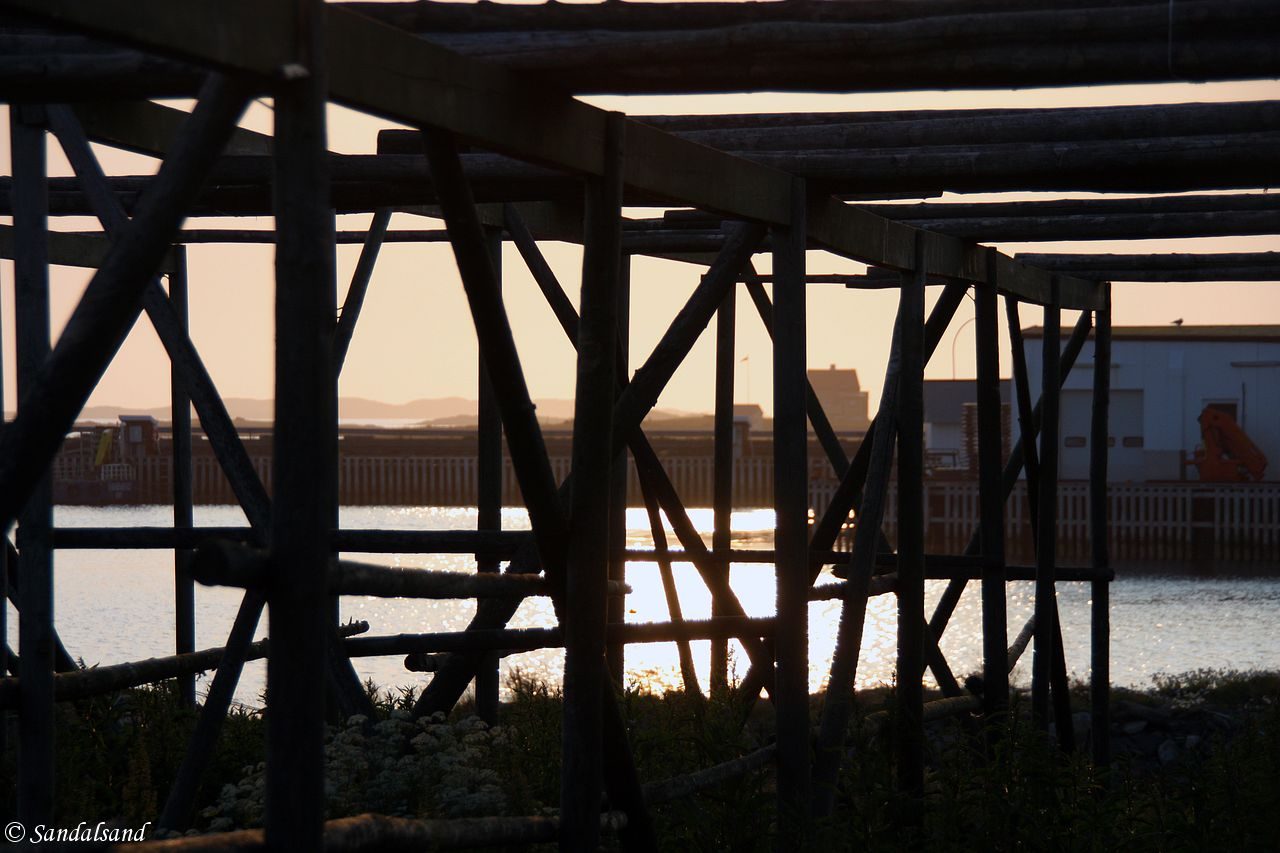Pietro Querini is the Venetian nobleman who in the early summer of 1431 in Chania, Crete embarks on a ship loaded with wine and spices, and a crew of 68. They are off to Flanders. Instead they end up shipwrecked at Røst in Lofoten, Northern Norway.
Near the English Channel they are overtaken by a storm and brought far out to sea west of Ireland. The worst part was yet to come, because the storm then breaks the rudder and tears up the sails. Captain Querini decides to leave his galleon, and orders his crew into the ship’s two lifeboats. The smallest lifeboat disappears quickly with men and mice, but the biggest with 47 men aboard drifts north with the Gulf Stream for three weeks and lands in the archipelago of Røst, at the edge of Lofoten. Querini writes 5th of January 1432 in his diary.
No more than 11 men are able to walk ashore, all exhausted by hunger and thirst. It is freezing cold.
They say it was here they disembarked, the Italians, on Sandøya. A memorial has been erected.
.
Querini and his shipwrecked crew are soon discovered by locals and taken care of. Throughout the winter they stay with the people of Røst and get to experience their daily life in a tough nature. Three months later, when the winter fisheries are over the Italians manage to secure places on a merchant vessel bound for Bergen. They jump off the ship in Trondheim, and continue through Sweden on land. Then they walk all across continental Europe before they are finally back in Italy.
.
During the journey and stay in Røst, and later, Pietro Querini takes notes of his experiences. In 1559 the account is published in Venice by Gio Battista Ramusio in “Navigationi e viaggi“. The story spreads to a wider audience with a German translation in 1613. In 1763, parts of this German text is translated and published in Norwegian by Gerhard Schøning in “De Trondhjemske Selskaps Skrifter“.
Then, in 1881 a new report is discovered in the Biblioteca Marciana in Venice. It is a copied story by two men from Querini’s crew, Cristoforo Fioravante and Nicoloò de Michiel.
Storfjellet right and Trenyken farthest away. This was the vision Querini and his crew also faced, in 1432.
Querini’s and the crew reports from the 1400s are later translated from Italian by Amund Sommerfeldt and published in Topografisk-historisk beskrivelse over Nordlands amt (Aschehoug, 1908) with Amund Helland as the principal author and editor.
.
In modern times Sommerfeldt’s translation was converted by Lars Næsheim into an eBook format. There are no licenses involved. However the copy is restricted to non-commercial purposes. Sandalsand adheres to that and retains the translation. Other formatting and this introductory text is adapted to this publication.
It is definitely an amazing story we get here. In particular the stories from everyday life among the locals are excellent. They are valuable sources of learning about how life was on the coast of northern Norway in ancient times. There are few other, if any, written sources from this period of time to base our history writing on.
.
Read the book (pdf) from Pietro Querini and his crew’s amazing journey.
The book contains Sandalsand’s foreword and the reports from Querini himself and two of his crew. Unfortunately for most readers, the text is in Danish/Norwegian. I have not yet come across a translation into English. In 2007 the original texts were translated into modern Italian and published in the book called “Il Naufragio della Querina“.
.
Røst of today, almost 600 years later, is of a completely different character. Still, life on the islands in this archipelago is still reliant on fishing, they still produce stockfish for export, arctic birds still nest in the bird cliffs on the outer islands, the scenery is the same and so is the exposed location in the cold, sometimes very inhospitable weather conditions. Arriving here, I was able to spend a few days under the midnight sun discovering what the islands have to offer now. Read the articles from Sandalsand’s visit to Røstlandet and to the seabird colonies of Røst.
This article first appeared in Norwegian on “Sandalsand Norge”.


